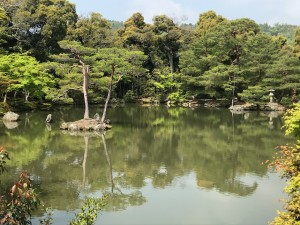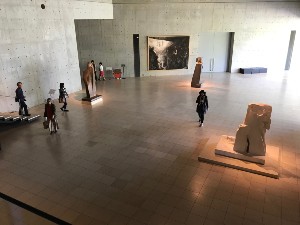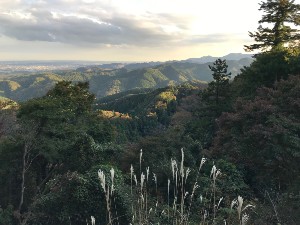Tō-ji, an Historic Temple Established After the Capitol Moved to Kyoto

As I mentioned in the previous lesson describing our bus tour, one of the four main stops was at the To-ji temple in southwestern Kyoto. It was mid-afternoon, and not too crowded yet, so we get around easily and take some great pictures. Sakura was blooming nicely on the numerous cherry trees on the property.
In the year 794, Heian-kyō, now known as Kyoto, became the capitol of Japan. The reason the capitol was moved to Kyoto was because in Nara, the previous capitol, powerful temples in the region were exhibiting disturbing influence on the political functioning of the government. So, with that in mind, it took some time for the government to allow any temples to be built in Kyoto. But a couple of years after the capitol moved, the government acquiesced, and allowed three Buddhist temples to be built: Tō-ji on the eastern side of the Rashōmon Gate, Sai-ji on the western side of the gate, and Shingon-in located within the imperial palace grounds. Rashōmon Gate lead straight through Kyoto towards the Heian Palace. Only To-ji still exists.
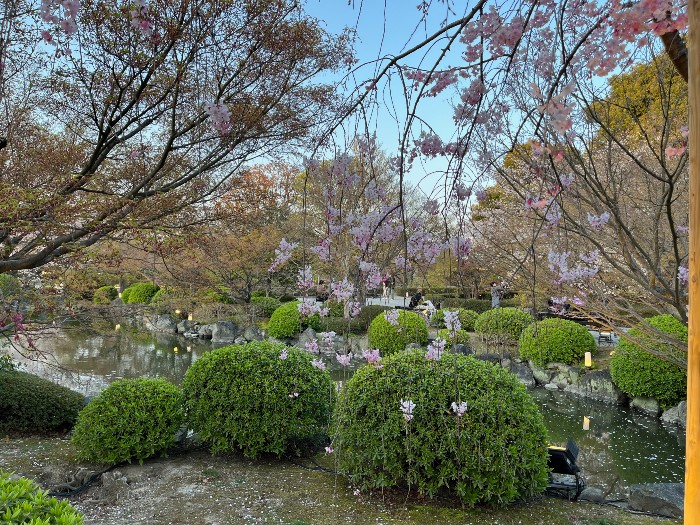
Emperor Saga appointed the monk Kobo Daishi, founder of the esoteric Shingon school of Buddhism, as Chief Abbot of Tō-ji in 823. Hence, the artifacts inside the individual temple buildings are of important figures of Shingon Buddhism.
Even with a time limit imposed by the bus tour, we were able to see the major buildings within this sprawling temple complex. The most eye catching by far is the five storied pagoda, gojū no tō. You can see it from outside the gates of the temple, so we had to head there straight away.
As you come into the interior of the temple grounds, you will notice Tōji Hyōtan-ike, a fairly large pond that extends all the way down towards the pagoda. It is lined with numerous cherry trees, which were in full bloom. Gorgeous!
We were not able to enter the pagoda, though I understand that you can enter on certain days in the spring. Apparently we were not here on one of those days. No matter, it is a magnificent structure, and worth the seemingly billions of pictures I took of it.
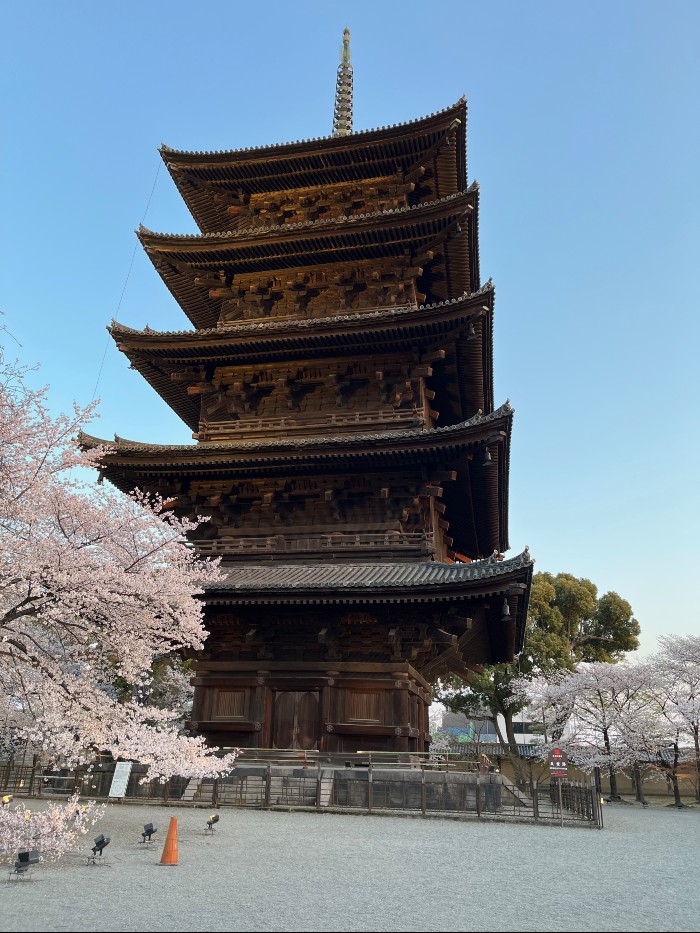
The history of this pagoda is rather sad really. Built in the 9th century, the pagoda burned down numerous times over the centuries mainly due to lightening strikes, and was rebuilt every time. The last time it was rebuilt was during the Edo Period in 1644, and has been able to avoid yet another catastrophe since.
Next we strolled over to the enormous building known as Kondo Hall. The original hall was built in the 8th century but burned down in 1486 and was reconstructed in 1603. There are around 10 steps to get up to the level to enter the building. Inside is a famous wooden statue of Yakushi Nyorai, Nikko and Gakko Bodhisattvas at each side. Yakushi Nyorai is the Buddha of Medicine. Bodhisattvas are enlightened beings who have put off entering paradise in order to help others attain enlightenment.
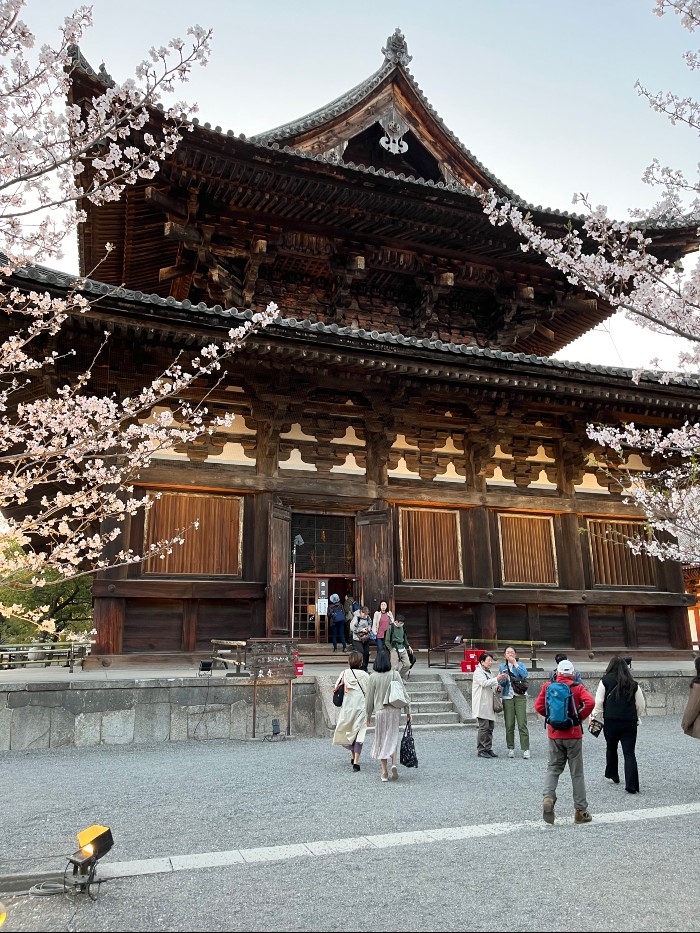
Right next door is Kodo Hall, which was constructed in 825 by Kobo Daishi, a Japanese Buddhist monk who founded the esoteric Shingon sect of Buddhism. It too burned down with Kondo Hall in 1486, and rebuilt in 1491. Statues imported by Kobo Daishi from China are on display, with Dainichi Buddha at the center, surrounded by other Buddhas and bodhisattvas. Dainichi is the creator of the universe and the king of all buddhas.
Neither of these buildings allow pictures to be taken, so you'll have to see them for yourself! Afterward, we headed over to the Jikido, where you can buy tea and mochi snacks. We did just that, and sat down in the open air pavilion to watch the sun go down, and the lights go on. To-ji is like a different world with the trees and buildings illuminated.
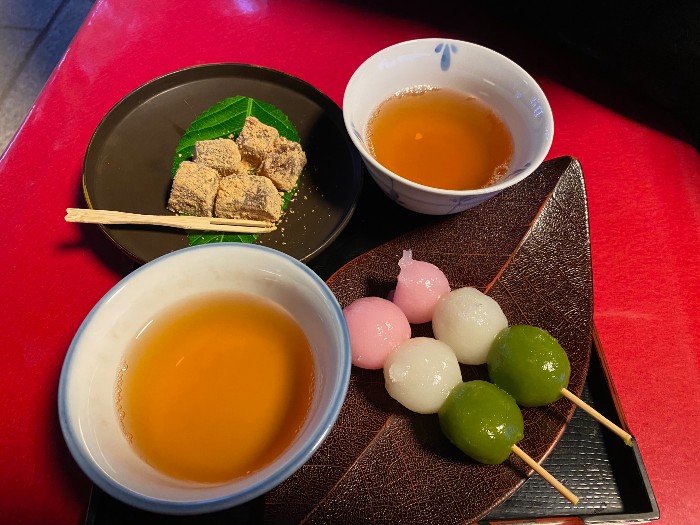
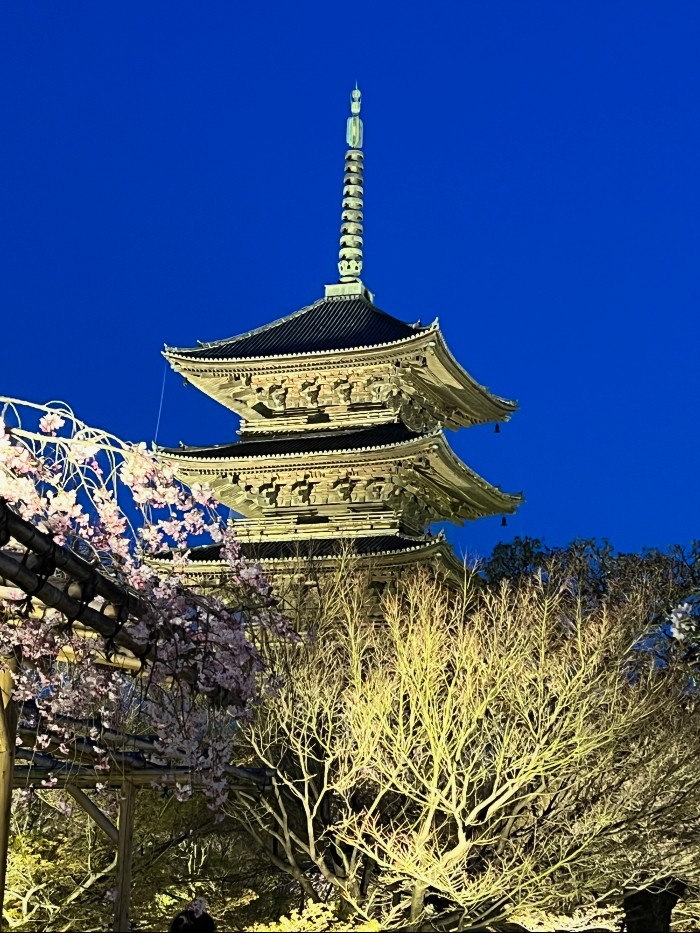
After our tea and snacks it was time to meet back at the bus, and so off we went. We felt we were extremely lucky to see this temple in good weather at cherry blossom time. I hope you are able to do the same someday!














